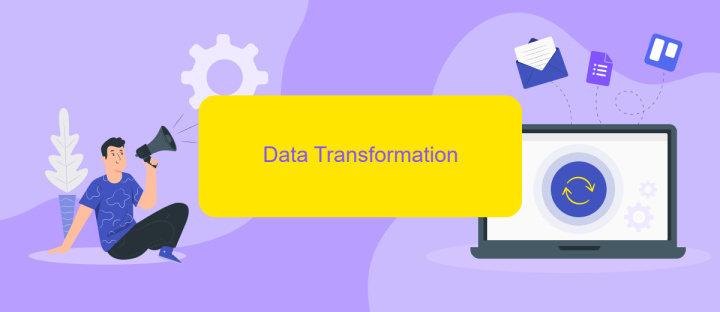ETL Process in Data Warehouse PPT
The ETL (Extract, Transform, Load) process is a crucial component in the architecture of data warehouses, enabling the efficient consolidation and transformation of data from various sources into a centralized repository. This presentation will delve into the key stages of the ETL process, highlighting best practices, common challenges, and the essential tools used to ensure data integrity and accessibility.
ETL Process Overview
The ETL (Extract, Transform, Load) process is a critical component in data warehousing. It involves extracting data from various sources, transforming it into a suitable format, and loading it into a data warehouse for analysis and reporting. This process ensures that data is accurate, consistent, and accessible for decision-making.
- Extract: Data is collected from multiple sources, such as databases, APIs, and flat files.
- Transform: The extracted data is cleaned, normalized, and formatted to meet the data warehouse's requirements.
- Load: The transformed data is loaded into the data warehouse, making it available for querying and analysis.
Effective ETL processes often require integration tools to streamline and automate tasks. One such tool is ApiX-Drive, which simplifies the integration of various data sources and services. ApiX-Drive enables seamless data extraction and transformation, reducing the complexity and time required for ETL processes. By leveraging such tools, organizations can ensure efficient and reliable data management in their data warehousing efforts.
Data Extraction

Data extraction is the first and crucial step in the ETL process, where raw data is collected from various sources for further processing. This stage involves identifying and accessing relevant data from databases, APIs, flat files, or other data repositories. The main objective is to gather accurate and complete data without altering its original structure. Effective extraction ensures that the subsequent transformation and loading phases can proceed smoothly and efficiently.
To streamline data extraction, various tools and services can be employed, such as ApiX-Drive. ApiX-Drive simplifies the integration process by allowing users to connect different data sources effortlessly. It supports a wide range of applications and platforms, enabling seamless data flow between systems. By automating data extraction, ApiX-Drive reduces manual efforts, minimizes errors, and accelerates the overall ETL process. Leveraging such services ensures that businesses can maintain data integrity and focus on deriving valuable insights from their data.
Data Transformation

Data transformation is a critical phase in the ETL process, where raw data is converted into a format suitable for analysis and reporting. This step ensures that the data is clean, consistent, and usable, which is essential for making informed business decisions.
- Data Cleaning: This involves removing duplicates, correcting errors, and handling missing values to ensure data quality.
- Data Integration: Combining data from different sources into a unified view. Tools like ApiX-Drive can simplify this process by automating the integration of various data streams.
- Data Aggregation: Summarizing detailed data into higher-level insights, such as calculating averages or totals.
- Data Transformation: Applying business rules to convert data into the desired format, such as changing date formats or standardizing units of measurement.
Effective data transformation improves the accuracy and reliability of the data warehouse, enabling better analytics and decision-making. Leveraging tools like ApiX-Drive can streamline the integration and transformation processes, ensuring that data is readily available and in the correct format for end-users.
Data Loading

Data loading is a critical phase in the ETL process where transformed data is loaded into the target data warehouse. This step ensures that data is available for analysis and reporting, enabling organizations to make informed decisions based on accurate and up-to-date information.
During the data loading phase, it is essential to ensure data integrity and consistency. This involves validating the data to prevent any discrepancies and ensuring that it conforms to the predefined schema of the data warehouse. Additionally, efficient data loading techniques are employed to minimize the time taken for this process, especially when dealing with large volumes of data.
- Full Load: Loading all the data into the target system.
- Incremental Load: Loading only the data that has changed since the last load.
- Batch Processing: Loading data in batches at scheduled intervals.
- Real-Time Processing: Loading data in real-time as it becomes available.
Tools and services such as ApiX-Drive can facilitate the data loading process by automating the integration and synchronization of data from various sources. This not only saves time but also reduces the risk of errors, ensuring that the data warehouse is always up-to-date and reliable.
ETL Process Management
Effective ETL process management is crucial for ensuring the seamless extraction, transformation, and loading of data in a data warehouse environment. It involves the coordination of various tasks, including data extraction from multiple sources, data transformation to ensure consistency and quality, and data loading into the target data warehouse. Monitoring and scheduling are key components, as they help to automate and streamline the ETL process, reducing the risk of errors and improving overall efficiency.
Integrating with external services can further enhance ETL process management. For instance, ApiX-Drive is a powerful tool that facilitates the automation of data integrations between various applications and services. By leveraging ApiX-Drive, organizations can simplify the setup and management of data flows, ensuring that data is consistently and accurately transferred between systems. This not only saves time but also ensures that data is up-to-date, which is essential for making informed business decisions. Effective ETL process management, combined with tools like ApiX-Drive, can significantly improve the performance and reliability of a data warehouse.
FAQ
What is an ETL process in a data warehouse?
Why is ETL important for data warehousing?
What are the main stages of the ETL process?
How often should the ETL process be run?
Can the ETL process be automated?
Do you want to achieve your goals in business, career and life faster and better? Do it with ApiX-Drive – a tool that will remove a significant part of the routine from workflows and free up additional time to achieve your goals. Test the capabilities of Apix-Drive for free – see for yourself the effectiveness of the tool.

